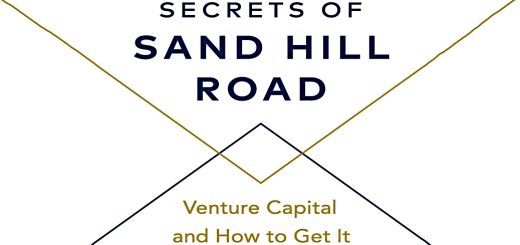Secrets of Sand Hill Road #2 – LPs, GPs and Startups

Today’s post is our second visit to Scott Kupor’s book Secrets of Sand Hill Road.
Limited partners
Limited partners are the people who invest their money into VC firms.
Historical VC
Scott begins Chapter 3 with some historical examples of VC:
- Queen Isabella of Spain’s funding of Christopher Columbus
- the whaling industry in the 19th century
- JP Morgan’s funding of Thomas Edison
All of these were acting like today’s limited partners.
Today’s LPs
The main types of LP are:
- university endowments (Yale under David Swenson is the best known example, and Scott provides a lot of detail on this fund)
- foundations
- corporate and US state pension funds
- insurance companies
- family offices
- sovereign wealth funds
- funds of funds (including listed PE vehicles like HarbourVest)
Diversification
LPs invest in VC in order to diversify their portfolios into another potential source of alpha (excess returns over a benchmark).
VC is a growth asset, like listed stocks and hedge funds.
- LPs also invest in inflation hedges (property and commodities)
- And in deflation hedges (bonds and cash).
Liquidity
LPs need to get their money back from VCs, in order to reinvest in new opportunities
- So VCs need to either sell their holdings or take the companies public.
The position of the VC firm in its fund life cycle (and how the rest of the companies in the fund are performing) will be a factor in the amount of pressure it puts on its investments to provide an exit.
One thing for you as an entrepreneur to consider is how old the fund is from which you are receiving your investment. If [the VC firm is] early in the fund, then they should have less pressure to return capital.
Funds tend to be ten years in life and often can get extended for a few years beyond that. But VCs are generally limited in how late into the fund they can make new investments (often only through years five or six).
Reserves
VCs generally set aside “reserves,” that they invest in a startup over the course of its next several financing rounds. Thus, the later in a fund cycle your investment occurs, the greater the likelihood that the VC may also not have sufficient reserves to set aside.
Later funds from the same VC might invest in later rounds, but that makes things more complicated since later funds will have different LPs.
So if you [as an entrpreneur] are thinking that you might need more capital, you’ll want to assess the likelihood of the [VC] firm being able to raise its next fund.
LP legalities
So what are the limitations of LPs?
- they have no say in which investments the VC firm makes
- and they can’t control exits
- they also have limited liability (like most shareholders) if the company gets sued
These limitations arise from the partnership structure of VC firms.
- The controlling managers are known in the US as general partners (GPs, a confusing abbreviation in the UK – unfortunately managing partners/MPs is no better).
Partnerships are “pass-through” entities.
- Unlike limited companies (known as C corporations in the US), the entity itself is not taxed.
Instead, profits are passed to the partners who are taxed personally.
- This avoids double taxation (eg. of dividends, which used to be tax-free for basic rate taxpayers in the UK but are now taxed).
Since many LPs (university endowments and foundations) don’t pay tax at all, this arrangement suits them.
Management fees
Typical VC firms charge 2 percent annually, although some firms are able to charge as much as 3 percent.
When a GP closes a $100 million fund, it doesn’t collect $100 million up front from LPs. Rather, the LPs make a financial commitment over the life of the fund to provide the capital when “called” by the GP.
This is to avoid uninvested cash acting as a drag on returns.
Typically most of the capital will be called over the first three to four years of the partnership.
Even though the GP is not investing (and thus not calling) all of the $100 million up front, the GP is able to take a 2 percent management fee, or $2 million per year, on the full amount of the committed capital.
Some VCs only charge on called capital, but most don’t.
As the fund ages and more of the GP’s activity shifts to managing existing investments (versus finding new ones), many funds start to have a step-down in the fee.
The 2% pa might drop to 1.5% pa or 1% pa, or the fee might only be applied to the companies remaining in the portfolio (or rather the capital raised for those firms).
Carried Interest
The heart of compensation for GPs (at least for those who are successful investors) is carried interest.
In essence, this is a cut of the profits, usually 20% to 30%.
- Some funds have a hurdle rate of say 8% pa where only profits in excess of this rate attract fees (but this is more common in PE/buyout funds than in VC funds).
GPs usually invest in their own funds and may also recycle some of their fees and profits back into the fund.
Cash flow
The effect of calling capital from LPs in the early years coupled with the long gestation cycles for companies to grow and ultimately exit creates what is known as the “J curve.”
A VC fund has negative cash flow in the early years, and positive cash flow later.
- Exacerbating this effect is the fact that “lemons ripen early” – dud go bust before the winners can be sold/floated.
So to begin with, there will be no cash around to allow the carried interest (and the LP profits and return of capital) to be distributed.
Sometimes this works the other way, and GPs are paid profits which have to be clawed back later when the remaining companies in a fund go bust.
- For this reason, some funds don’t allow GP distributions until LP initial capital has been returned.
Valuation
VC firms have to mark their investments to market each quarter under GAAP rules.
But there is no market price, so other methods are used:
- last round valuation
- comparable companies (using perhaps price to sales, and applying a “discount for lack of marketability”/DLOM)
- option pricing model/OPM (Black-Scholes valuation of the basket of employee stock options)
Last round often produces the highest value (particular for hot firms/unicorns), with comparable companies giving the lowest value and OPM something in between.
Money flow impacts
How the fund is doing may influence your GP’s willingness to invest additional money in your startup or her desire to seek an exit.
If your company is the lone shining star in an otherwise poor portfolio and you receive an acquisition offer that would meaningfully help the GP to get cash back to her LPs, she might be more inclined to push you to take that deal.
Governance
There are a few common terms that LPs will insist on in order to control what the GP can do:
- Investment Domain
- What kinds of firms can the fund invest in, and at what stage of their development, and in which geographies and using which financial instruments?
- Best Ideas
- The GP is usually not allowed to keep “best ideas” back for another fund or for themselves or to invest separately in fund companies
- Best Efforts
- The GP has to devote “substantially all” of his efforts to running the firm
LPs can normally suspend or terminate an agreement if 80% of them vote in favour.
C-corps
Chapter 6 looks at how to form a start company in the US.
- Some of this is not relevant to the UK, so I will be brief.
Scott recommends the C-corp (limited company) form, rather than a partnership.
The C corp is a good vehicle for companies that are focused on building long-term equity value in the business versus distributing profits directly to shareholders.
With a startup, we don’t really want to distribute profits to the owners, at least not in the early days. Rather, if we have profits, we would likely choose to reinvest those profits in the business to continue to grow its value.
With a partnership, this process would create a tax liability but no cash.
- Of course, losses in the early years would pass though a benefit (offset against other gains/income) but the plan is to generate (and reinvest) profits in the medium term.
It’s also easier to grant equity (and share options) in a C-corp.
For VCs, C-corps support multiple share classes (with different rights – partnerships can obviously support a similar structure) and avoid tax liabilities for non-taxable LPs.
Founder Stock Vesting
The basic purpose of founder equity is to create long-term incentives. That’s the whole idea of vesting: you contribute to the success of the company by helping to grow the business, and you are rewarded over time with an increasing ownership position in the equity you helped create.
Vesting usually happens four years after options are granted, though this is probably too short a time given the likely runway to an exit.
By the time founders raise their first institutional financing round, they may be as much as 50 percent vested, assuming that they have been working on the company for at least two years prior to the time they raised financing.
Removing founders
You will want to make sure that board seats are conditioned upon continued service to the company as an employee, not simply granted to someone as a function of having been a cofounder.
Stock transfer restrictions
A blanket transfer restriction means that shareholders cannot sell without some form of company consent.
Most companies have a right-of-first- refusal (ROFR) agreement – if someone is trying to sell her stock, the company has a right to match any offers received and effect the purchase.
In most startups, this is not the highest and best use of cash, and as a result, most companies waive this right and permit the third-party sale to go through.
Accelerated vesting
In the acquisition scenario, founders will often have single-trigger or double-trigger acceleration provisions.
In a single- trigger provision, the founder’s stock is accelerated upon the closing of an M&A event; in a double trigger, both the closing of the deal and the acquirer’s decision not to retain the founder in the new entity are required for acceleration.
Intellectual Property
We need to make sure that there is no entanglement of the intellectual property with the previous employer and that the startup owns all the inventions.
Checking that the founders didn’t work on the IP whilst at a former employer is part of VC due diligence.
VCs will ask whether you developed the technology during work hours at your last employer, whether you used company property (e.g., your company-issued laptop) to develop the technology, and whether you downloaded anything from your employer (documents or source code) that may have influenced your startup’s technology.
Employee Option Pools
To grant equity to key employees, most founders create an employee equity pool of 15% of stock.
- Incentive Stock Options (ISOs) are tax-free on vesting – US tax is deferred until the actual shares are sold.
- Non-Qualified options (NQOs) are taxed at exercise.
“Only” $100K of ISOs can be granted to an employee each year, and they need to be exercised within 90 days of an employee leaving the company (which might be an unwelcome cash call).
Like founder equity, employee options usually vest over four years.
- But often this will mean no vesting in year 1, followed by 1/36th of the value each month after.
Longer IPOs
Four-year vesting is a throwback to when firms would IPO after four to six years.
- Nowadays, ten years is more likely and many fewer companies are coming to market, particularly smaller companies (less than $50M in annual revenue).
Scott offers five reasons for this:
1. It Costs Too Much Money to Go Public (increased regulation)
2. Efficiency Rules Disproportionately Affect Smaller Companies
3. Mutual Funds Are Bigger, and Therefore Like Bigger Companies
4. There Are Alternative Forms of Private Financing Out There
5. There’s Too Much Pressure on Public Companies (activist investors)
That’s it for today.
- We’re now 40% of the way through the book, with three more articles (plus a summary) to come.
Until next time.














